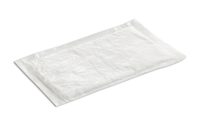More meat, poultry and seafood processors are discovering the advantages of instantly generating carbon dioxide (CO2) snow for production chilling, says Mark DiMaggio, head of food & beverage, Linde LLC.
There are many advantages to instant, on-demand CO2 snow generation systems vs. dry ice pellets – from purchasing to productivity.
“Dry ice seems to invite motion injuries and inconsistent chilling temperatures. With instant CO2 snow, all the challenges associated with buying, storing and handling dry ice can be eliminated,” he said.
On demand CO2 snow solutions from Linde rapidly and accurately chill meat, poultry or seafood products, and can help achieve more consistent temperatures across the food and more repeatable chilling operations:
- The DRI PACK automated box chilling system adds CO2 snow to boxes as they move along a conveyor.
- The ACCU-CHILL combo chiller automates loading and chilling cut poultry in combo bins.
- Linde CO2 snow generators and snow horns are engineered to safely and efficiently produce CO2 snow when needed.
With on-demand technology from Linde, CO2 snow is generated on site, only when and where it is needed. This can reduce storage requirements and conserve floor space. It also eliminates the sublimation losses associated with storing dry ice. Instant CO2 snow generators can be easily installed at processing stations throughout the plant, and are often ideal for those first switching to an on-demand system. The ACCU-CHILL combo-chiller and DRI PACK box-chilling systems are automated and can achieve high efficiency at high production rates.
For operations that currently pack fresh or chilled food, for example, in boxes with water ice or pellets, the DRI PACK system consistently chills with temperatures well below freezing. CO2 becomes solid at minus 109.6 degrees F which can help extend shipping range. Chilling with CO2 snow also eliminates the product losses associated with melting ice or wet boxes.
The Linde food team makes it easy to switch to an instant CO2 snow generation system. Services include on-site evaluation of existing chilling processes, liquid CO2 storage and supply, CO2 snow system installation, safety training, and startup, with parts and maintenance plans available.
In addition to instant chilling with CO2 snow, Linde also offers systems that chill with liquid nitrogen (LIN). ACCU-CHILL bottom-injection (BI) systems chill ground meat or poultry products from the bottom of a mixer/blender using liquid cryogen. Linde bottom injection systems are inherently more efficient than any top chilling method. With LIN as the cryogen, advanced ACCU-CHILL systems have proven effective in recent years for chilling even wet poultry mixes.
The Linde food team performs in-plant assessments to identify current cost-to-chill and works with processors to develop optimal process solutions. For more information, visit: www.lindefood.com, or call: 800-755-9277.




Report Abusive Comment